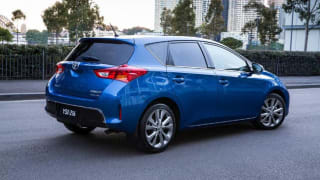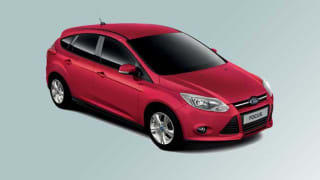The Mazda3 has been the quiet achiever of the Australian private car fleet. It’s driven in the Holden Commodore’s wheel ruts as Australia’s favourite car for the past seven years. In the process it, along with the Toyota Corolla, has steadily gained small car converts and led the segment growth from 181,000 sales in 2004 to more than 239,000 last year.
The Corolla’s cause has been bolstered by ongoing fleet sales, leaving the Mazda3 a consistent favourite as Australia’s top private seller. A mild makeover won’t set the world on fire but it doesn’t have to. The Mazda3 leads the segment this year and was the nation’s top-selling car in June and August ... and the price cuts to an already good car will catch more attention than extra bling.
Value
Nothing says buy me like a bargain. When that price cut comes with the launch of a new model, so there’s no association with discount sales, it demands customer interest. Mazda’s banking on it to keep the 3 at the front of the class and, based on first impressions, it deserves to be there. The base Neo has a $1000 price cut to $20,330, the Maxx Sport and Diesel models are both down $1870 to $24,490 and $27,360 respectively.
Explore the 2012 Mazda 3 range
The Skyactiv models then slot in at $27,990 for the regular version and $30,990 for the Luxury, which comes with bi-xenon headlamps, leather seat trim, a sliding centre armrest console, Bose 242 watt amplifier and 10 speakers including subwoofer. The sports-focused SP25 and extreme MPS round out the range at $31,490 and $39,490.
Technology
The Skyactiv-G technology introduced in the Mazda3 could be dubbed Skyactiv Lite. Part of Mazda’s ability to crank huge compression ratios out of its petrol engines lies in the 4-2-1 exhaust system. It requires transverse engines to be tilted back, and that can’t happen on the Mazda3 until the next generation car. As a result, compression is down from 14:1 to 12:1. The ouput gains over the 2.0 engine used in the Neo and Maxx Sport aren’t huge either: 113kW is up 6.6 per cent and 194Nm is a 4.4 per cent rise. It’s the 25 per cent slash to the fuel use that wins the argument.
The same capacity Skyactiv engine uses 6.1 litres every 100km as a sedan, (6.2 litres/100km for the hatch) and emits 143g/km of CO2 against 7.9 litres/100km and CO2 emissions of 187g/km. Mazda says the lightweight six-speed automatic transmission combines the best features of dual-clutch, CVT and conventional autos. If that means the shifts are generally not felt on light throttle pressure and kick down nicely at a prod, then it works.
Design
The second-generation Mazda3 sold from the day it hit showrooms. The public light the cheery front, rakish lines and smart interior styling. That didn’t give Mazda cause to change much and the easiest way to spot the new model is by the fog lights flipping from rectangular to round. The winglets on the front spoiler have been tweaked to improve aero efficiency and the rear bumper is 30mm shorter.
The alloy wheels are a new design and the displays (digital and analogue) are now white characters on a coloured background and are easier to read for it. The interior chrome has been scaled back in all models and the cars look more refined for it.
Safety
The Mazda3 is as safe as a small car gets. It earned five stars in ANCAP testing and the facelift has reinforced floor beams that should improve occupant protection. All models are fitted with six airbags and have all the electronic aids we’ve come to associate with safe vehicles. The Skyactiv’s front brakes are bigger than in the lower-spec models and the extra bite is felt at the end of a downhill run.

Driving
The Mazda3 is a good thing done marginally better in many areas. The handling was never a worry but Mazda says the damping has been revised and it had no problems ironing out some big ruts at low or high speed. Thicker beams in the floor and more spot welds have stiffened the body to sit even flatter through turns and the Skyactiv’s near-flat torque curve makes it an engaging drive. Push it hard and the fuel use will briefly climb into the low 10 litres/100km. Drive more sanely and 7.4-litres/100km is easy to do.
The Skyactiv is expected to account for 15 per cent of Mazda3 sales but spokesman Steve Maciver says it’s a toe-in-the-water exercise to showcase the technology. It is a clever unit, but it is facing a host of rival machinery, from Holden’s 1.4-litre turbo petrol to the 2.0-litre engine in the Ford Focus, that are comparable in terms of performance and fuel use but are up to $3500 cheaper.
Given the existing Mazda3 sold its stocks off in August, the rivals haven’t resonated with buyers and the new model should only improve the company’s market share.











